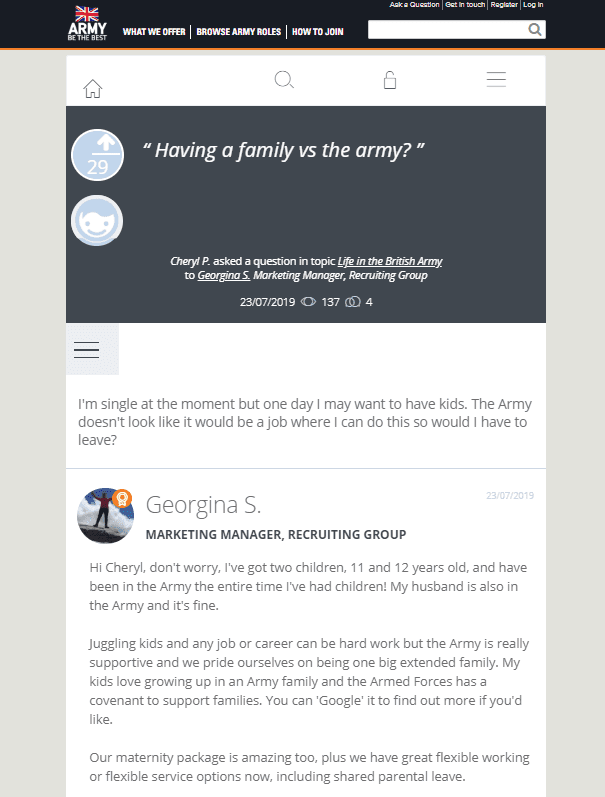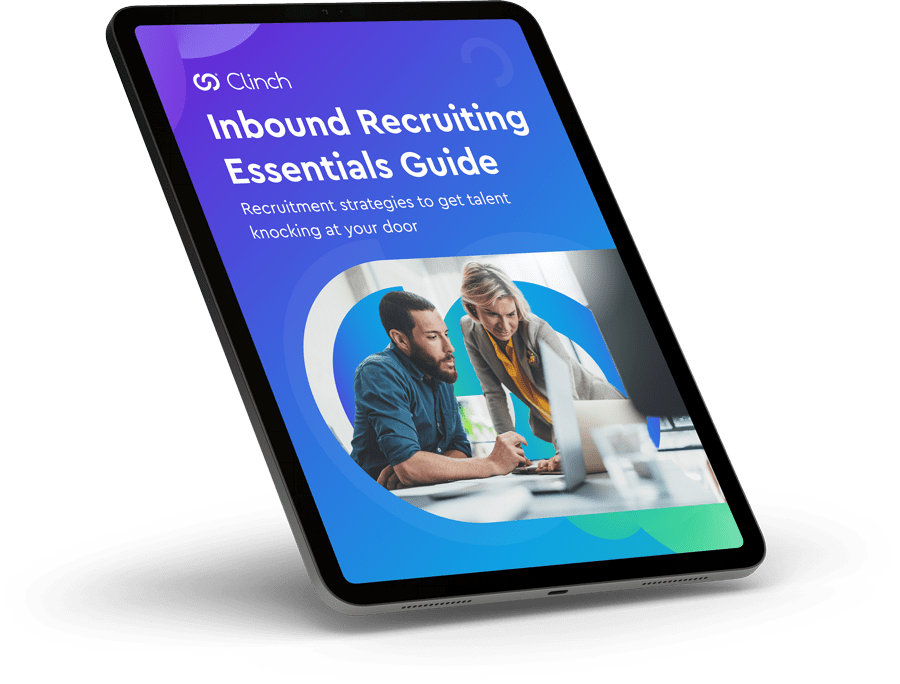The competition for recruiting and retaining talented employees has exploded into a full-on ‘War for Talent’. A tool that has been developed to tackle this competition is employer branding. That is, the long-term strategy whose goal is to establish a strengthened recruiting position and to ensure differentiation from competitors.
The employer value proposition (EVP), is differentiated from the employer brand by what it offers – a range of value-adds that distinguish the employment situation in a given company from that of competitors.
The EVP’s sole purpose is to communicate the identity of the company as an employer. And although historically not communicated to customers, the EVP has expanded to become an outward-facing strategy – a means of advertising that serves as a recruitment channel. It gives would-be applicants a clear picture of what value they’ll get when working for a company. So naturally, it’s the first and most important component of the employer brand and is the hallmark of the attractiveness of your company to a prospective candidate.
According to Gartner, EVP can be divided into five attributes: the quality of the workforce and sense of camaraderie; opportunities for personal growth and projected company growth; the company’s quality of product and commitment to social responsibility; how well the job aligns to personal interests and work-life integration; and rewards which encompass benefits such as paid annual leave.
How Does Your Employer Value Proposition Compare with the Employer Brand?
The EVP defines the company in relation to its role as an employer and plays a crucial role in candidate recruitment. While the corporate brand defines the company’s products and services, the employer value proposition shifts the focus to the employees. People are a company’s most valuable resources – as supported by research – and are the EVP’s greatest asset. So, your workforce is necessarily influenced by and is influencing the EVP, which feeds into that larger employer brand.
A crucial differentiator between the employer brand and EVP is the direction they face. EVP is internal-facing, what your company shows its employees. On the other hand, the employer brand is external-facing, the company’s presentation to the world – its image, so to speak. Both are equally important (and complementary) because without a workforce that is actually enjoying the benefits, you’d be hard pressed to outwardly communicate benefits to candidates authentically. After all, authenticity lies at the heart of trust – and getting your candidates to trust you is essential for your talent attraction initiatives.
The Dangers of Having a Poor Employer Value Proposition
The Harvard Business Review, together with social research experts, ICM Unlimited, conducted a survey of 1,003 full-time professionals to determine the top three factors that contribute most to a bad reputation as a place to work: worries about dysfunctional teams, poor leadership and job security. And the issues are costly – poor reputation alone is estimated to cost a company as much as £132,000 as estimated by the Recruitment & Employment Confederation – and that’s just for the folks that a company can convince to come on board. Just under half of all people surveyed would rule out taking a position altogether should the top three issues rear their ugly heads, even in instances where a pay increase is offered.
These issues stem from a classic “expectations vs reality” situation, whereby the realities of the value-add offered by your company are misaligned with the experience of your workforce. The disconnect between these two things leads to poor employee retention and increased dissatisfaction. Whereas alignment will increase your Net Promoter Score (NPS) by about 20%.
How Do You Create an EVP that Will Attract the Best Talent?
The good news is that a simple reworking of your EVP can help you source the correct hire – the first-time round. The EVP serves as a living, breathing reality of your company’s corporate values. In essence, it should showcase an accurate snapshot of your culture, which should help you attract people to your company that can share in your core beliefs and will be able to seamlessly integrate into your workplace. There is no place for inaccuracies; authenticity should be at the forefront of your EVP in order to match candidates expectations with reality. In the long run, having an authentic EVP will minimise employee loss – particularly during the grace period between when hires accept their position and when they begin work.
By investing in the employer value proposition, you create a greater opportunity to take your talent acquisition efforts to the next level and access the widest possible talent pool. Here are four ways to boost your EVP for better talent attraction:
- Show Candidates the Right Content
- Get Your Employees Involved
- Connect the EVP to your Candidate Journey
- Use the EVP as a Promotional Tool for Diversity Commitment
1. Show Candidates the Right Content
Incorporating highly specific content into your employer value proposition is a sure-fire way to sell your authenticity. Consider the British Army, who have implemented the Clinch Employee Connections platform to help address misconceptions which can lead to reservations for potential applicants. One of their more popular discussion threads concerns work-life balance – and through candid discussions with selected employee Insiders, their EVP is organically communicated by showing that flexibility is at the core of their benefits and culture.

The British Army is leading by example – when they highlight family planning as part of their employer value proposition, they actively follow through and provide a clear illustration of their EVP in practice.
2. Get Your Employees Involved
It should come as little surprise that the most valuable recruitment tool is your employees. Social proof is to thank for that. This is particularly true as candidates share positive recruitment experiences with their inner circles more than 81% of the time and their negative experiences 66% of the time. If employees give negative feedback on working for your business to friends or leave damaging reviews online, the ability to attract the best candidates is damaged.
According to Glassdoor, candidates will read six reviews on average before forming an opinion about a company. Reviews, whilst outside of your immediate control, can be positively influenced. After all, your workforce are the ones providing the fodder for third party sites. By aligning your employees’ values with your own, you can earn their advocacy fairly and squarely – and in turn, their positive reviews will originally function as a talent attraction tool.
Use your EVP to align employees with the company’s bottom line. According to research from the Corporate Leadership Council, a well-tailored EVP can bolster employee advocacy from 24% to approaching 50%. Being truthful and honouring the remits of your EVP is critical for ensuring that you get the buy-in of your workforce and reap the benefits of attaining a recruitment strategy that delivers.
According to our research, 54% of candidates believed that personal stories are the best tool to frame the context of fair policies. They also provide the solution to the content and persuasion gap.
The Social Media Machine – Telling your EVP via Employee Stories
To make an impact with employee stories, you need reach. By focusing your efforts on getting your employees to share their work experiences on Facebook and Twitter (and indeed, beyond!) you can build a following for your EVP as you enter the space of Millenials and Gen Z-ers alike.
Stories shared at scale in this way builds influence. According to Cisco, employee posts produce up to eight times more engagement than when the same content is shared through the brand handle alone.
A company winning at the scaled advocacy game is AT&T. The American telecommunications giant has birthed the ‘AT&T Social Circle’ which has grown over the past few years. This effort combined with their career page on Facebook has strengthened their diverse branding strategy which showcases a more transparent and authentic voice. Employees are encouraged to share on social media – with the emphasis on using their personal voice – injecting humanity into the company’s otherwise corporate front. The company has also been at the helm of new trends. Most notably, live streams which they regularly host complete with the hashtag #AskATTJobs.
Social sharing offers you a perfect way to reach your diverse workforce. Clinch Employee Connections offers a highly convenient way to do this without the need to re-create new content on social media. Find relevant and popular discussions through keyword search and automatic rank and share across Facebook, LinkedIn and Twitter including a branded image – all with one click.
Clinch Employee Connections provides a professional networking platform that connects diverse talent to employee Insiders via online Q&A sessions, in-app messaging and virtual events like online career fairs. For example, our client KPMG hosts live online chat events, advertised on Facebook to support internal mobility in which they facilitate productive conversations between senior partners globally and thousands of other employees.
3. Connect the EVP to your Candidate Journey
An appealing EVP and brand reputation that is universally acknowledged as positive can help your company get ahead in the race to pick the best-fit candidates. Over two-thirds of job seekers are likely to apply to companies that actively manage their employer brand.
By mapping out your candidate experience journey from pre-engagement through to acquisition, you can determine the issues and areas for improvement. Knowing how your EVP impacts each stage of this journey is essential as, on average 20% of candidates will withdraw somewhere between accepting an offer and starting a job. It is important to create opportunities to reinforce the EVP and remind candidates of the value at all stages of the recruitment funnel through various re-engagement activities.
Research by the Hays Group has reported that firms with a high engagement scores have revenues that are approximately 4.5 times higher than those with low candidate engagement rates. So the EVP must function at all stages of the candidate experience journey in order to maintain the engagement that will build momentum towards the final stage – conversion to hire.
4. Use the EVP as a Promotional Tool for Diversity Commitment
It’s critically important that the employer brand signals to everyone that they’re welcome at your company. Turn to employees across a multitude of roles, locations, cultures and age groups to gather a comprehensive and diverse picture of your company’s appeal – and leverage that to reinforce your EVP.
And your employees should be the ones to do it.
Promoting diversity makes your company attractive to work for. A survey of more than 10,000 millennials revealed that more than 80% believed that an employer’s policy on diversity, equality and workforce inclusion is a key consideration when they determine whether or not to work for them. This reflects people’s desire to be part of a business that not only offers them opportunities to develop their individual careers, but also has values which are aligned to their own. When this policy resonates with the brand, it can form a key component of the employee value proposition – why people would want to work for the organisation.
The company ‘Stripe’ has come up with a truly intriguing EVP – inspiring candidates to apply even if they aren’t quite the perfect squirrel (although, let’s be honest – what candidate is?). The point that Stripe tries to make is that their focus is on finding the right people – people that will fit the culture and maintain the integrity of the employer brand at large:
“At Stripe, we’re looking for people with passion, grit, and integrity. You’re encouraged to apply even if your experience doesn’t precisely match the job description. Your skills and passion will stand out – and set you apart – especially if your career has taken some extraordinary twists and turns. At Stripe, we welcome diverse perspectives and people who think rigorously and aren’t afraid to challenge assumptions.”
By explicitly pointing out their welcome of diverse candidates, they are fully leveraging their EVP to help boost their diverse talent acquisition efforts.
A Final Word…
An EVP revival is necessary in a tight labour market where finding, and retaining great candidates is becoming increasingly difficult. Societal shifts and increased globalisation mean the up-and-coming talent pools are demanding greater freedom and mobility. The EVP can no longer be dismissed as the three-letter acronym in a HR buzzword rotation. It is necessary on both sides of the hiring funnel; from strengthening the company’s working relationships with the current workforce (which builds the advocacy necessary to propel the EVP) to disseminating it to fresh talent at the very beginning of the recruitment funnel.



